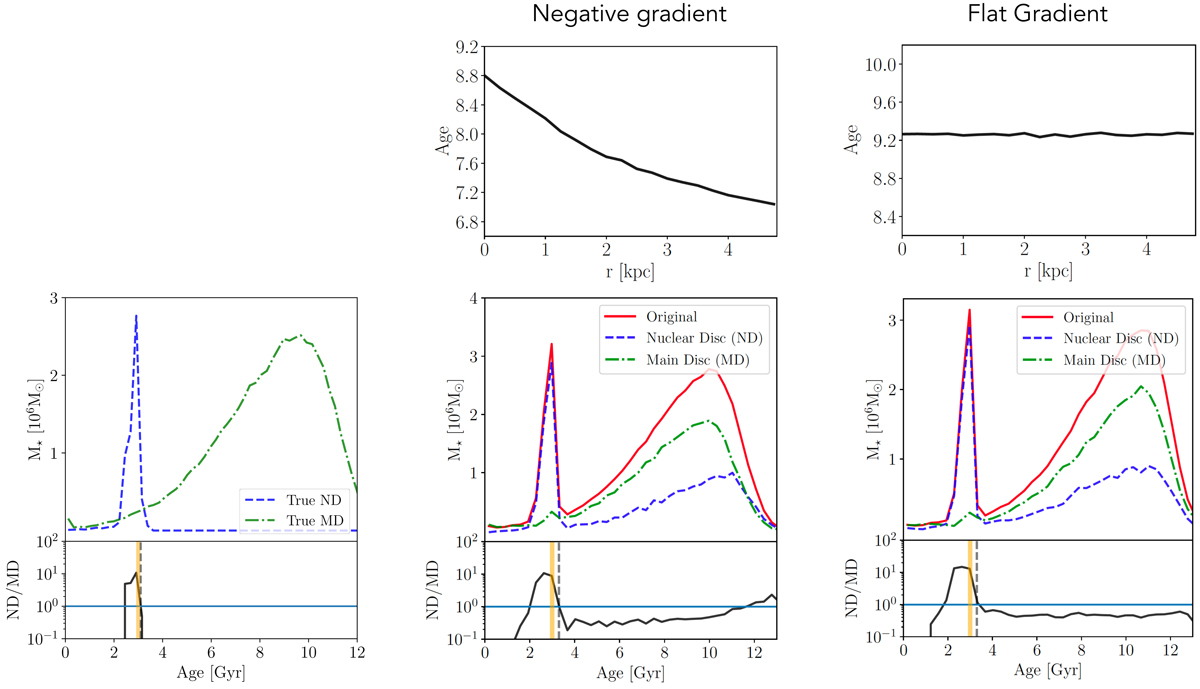Fig. C.1.

Download original image
Testing the bar age criterion and how the age gradient in the underlying MD affects our methodology for a simulated galaxy. In the left panel we show the ‘true’ SFH of the ND and MD. The true SFH of the ND is defined as the SFH of all stars formed from the gas pushed to the centre after the bar forms within the ND radius, rND. The true SFH of the MD is defined as the SFH of all the ‘old’ stars in the disc that were present before the bar and ND formed in the disc, within the same radius (i.e. rND). As one can see, in the bottom panel, the bar age criterion – the first moment at which ND/MD is above 1 with a positive slope towards younger ages (the vertical grey dashed line) – successfully times the moment the bar is formed (given by the vertical orange line). By comparing this and Fig. 6 we see that the methodology we present in this paper – which involves using a representative region around the ND to model the MD – is able to recover the SFH of the ND and, therefore, the bar age. In the middle and right panels we explore how the age gradient of the old underlying MD affects our methodology: in the middle panels we show a case where there is a negative age gradient applied to the underlying MD, while in the right panels we show the effects of a flat age gradient on the obtained results. The top panels show the average age gradient as a function of radius, and the bottom panels show how this affects the SFHs of the original ND region (red), of the representative SFH of the underlying MD (green), and of the cleaned ND (blue), and the lower panels show the ND/MD ratio.
Current usage metrics show cumulative count of Article Views (full-text article views including HTML views, PDF and ePub downloads, according to the available data) and Abstracts Views on Vision4Press platform.
Data correspond to usage on the plateform after 2015. The current usage metrics is available 48-96 hours after online publication and is updated daily on week days.
Initial download of the metrics may take a while.


